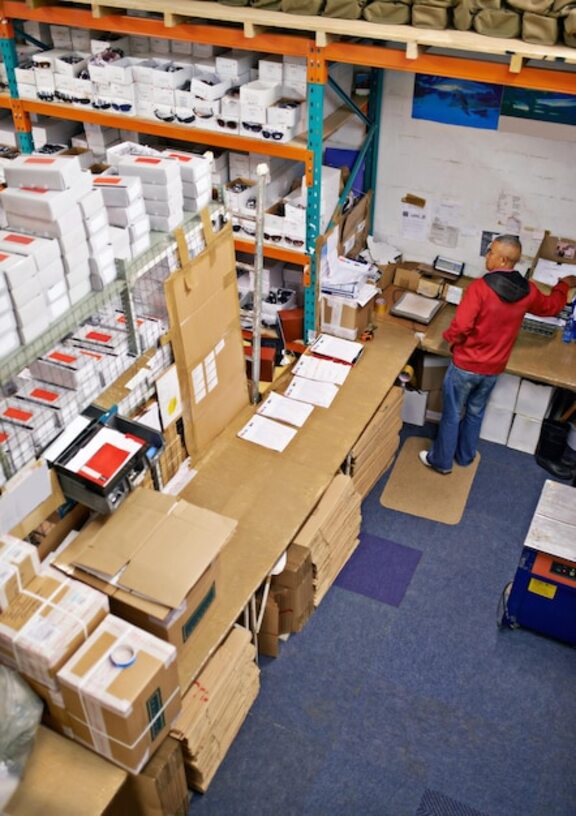Discover how to create a visual inventory for your move.

Discover how to create a visual inventory for your move and transform this process into a simple and organized experience. A visual inventory will not only help you keep an accurate record of your belongings, but it will also facilitate the logistics of the move, avoiding unpleasant surprises. With effective strategies and easy-to-use tools, you can ensure that each item arrives at its new home without complications. Get ready to move stress-free!
What is a visual inventory and why is it essential?
A visual inventory is a tool that consists of documenting all the objects you own in a graphic and organized manner, using photographs or videos. This method not only allows you to have a clear record of your belongings, but it also facilitates the identification of each item during the moving process. By creating a visual inventory, you can ensure that nothing gets lost along the way, significantly reducing the stress associated with these types of transitions. Additionally, having a visual representation helps you decide which items you really want to take with you and which could be discarded or donated. The essence of a visual inventory lies in its ability to simplify the logistical process of a move. When you are surrounded by the typical chaos of packing and relocating your things, having clear and organized images can be invaluable. Instead of relying solely on written lists that can be confusing or incomplete, photographs provide you with an immediate and understandable reference. This not only speeds up the packing and unpacking process but also offers peace of mind knowing exactly what you have and where each item is located in your new home.
2. Digital tools to create your visual inventory.
To create a visual inventory effectively, digital tools become essential allies. Applications like Trello or Notion allow you to organize your belongings intuitively and visually. You can create boards where each item has its own card, including photos, descriptions, and notes about its condition. This way, you will not only have a clear record of what you own, but you will also be able to categorize items by room or type, greatly facilitating the packing and unpacking process.
Another option is specific home inventory applications, such as Sortly or StuffKeeper. These platforms are designed to help you manage your belongings with ease; many offer features like QR code scanning for quick access to information about each item. Additionally, you can share your inventory with family or friends who can assist you during the move, ensuring that everyone is aware of what is being transported and where each item should go in your new home. With these digital tools at your disposal, creating a visual inventory becomes a simple and efficient task.
3. How to efficiently categorize your belongings.
To categorize your belongings efficiently, it is essential to start with strategic planning. You can divide your items into broad categories such as clothing, furniture, kitchen utensils, and decorative objects. Once you have these main categories, break each one down into more specific subcategories. For example, within the "clothing" category, you can include "winter," "summer," and "accessories." This approach will not only give you a clear overview of what you own but will also make it easier to select the items you truly need to take with you to your new home.
Additionally, when categorizing your belongings, consider using visual tools like labels or mobile inventory apps. Labeling boxes with specific colors or symbols for each category can save you time during the unpacking process. You could also create a digital inventory where you can photograph each item alongside its corresponding category; this will allow you to keep track more easily and avoid losses during the move. At the end of the process, you will have a visual record that will not only simplify your current move but can also be useful for future reference.
4. Tips for documenting valuable or fragile objects.
Documenting valuable or fragile items is an essential part of your visual inventory, as it will allow you to have a clear and detailed record of each one. Start by taking photographs of each item, making sure to capture different angles and any relevant details, such as marks or imperfections. Additionally, include documentation that supports their value, such as invoices or certificates of authenticity. This practice will not only help you keep track of your belongings, but it will also be invaluable in case you need to file an insurance claim for damages or losses during the move.
Once you have visually documented your valuable or fragile items, it is advisable to create a list with specific descriptions and locations within the home. This can be as simple as a digital file where the items are listed along with their corresponding photos. Make sure to categorize the objects —such as art, electronics, or antiques— to facilitate their later location. By having this information organized and accessible, you can minimize the risk of loss and ensure that each piece arrives at its destination in perfect condition.
5. Strategies to keep inventory updated during the move.
To keep your inventory updated during the move, it is essential to establish a clear system from the beginning. Start by labeling each box as you pack, making sure to note down in a list or a mobile app the contents of each one. This way, you will not only be able to quickly identify what you have, but you will also be able to check if all items have arrived at your new home. Consider creating a color-coding system for the labels; for example, use one color for essential items and another for non-urgent items. This will allow you to prioritize your unpacking and facilitate organization in your new space.
Another important strategy is to continuously track the inventory while items are being loaded and unloaded. Designate a trusted person to oversee this process or do it yourself if possible. As each box comes in and out of the moving truck, check its presence on your list or app. This practice not only ensures that nothing gets lost but also provides a sense of control and peace of mind during a time that can be chaotic. At the end of the day, having a well-managed visual inventory will save you time and effort when organizing your new home.
6. The importance of photos in your visual inventory.
Photos play a crucial role in creating an effective visual inventory, as they serve as a tangible representation of your belongings. By taking images of each item, you not only capture its condition and location but also facilitate the identification process during the move. This is especially useful when it comes to fragile or sentimental items, as having visual records can help ensure they arrive in the same condition they left. Furthermore, having these photos allows you to quickly verify if everything has been packed and transported properly.
Another important aspect is that photographs can serve as evidence in case of loss or damage during the move. If issues arise with the moving company or if you need to file claims with the insurance, having a visual inventory supported by images can be essential to demonstrate what you owned and the condition each item was in. Ultimately, integrating photos into your visual inventory not only enhances organization prior to the move but also provides peace of mind as you face this exciting change in your life.
7. How to use your inventory when unpacking in your new home.
Upon arriving at your new home, the unpacking process may seem overwhelming, but your visual inventory will be your best ally at this stage. Use the list you created during packing to quickly identify each box and its contents. When opening each one, check that the items match what was recorded; this will not only help you ensure that everything has arrived, but it will also allow you to easily locate what you need at that moment. For example, if you have a box labeled "kitchen," you will be able to find your utensils and appliances without having to randomly open all the boxes.
Additionally, a visual inventory will allow you to organize the unpacking by areas or rooms. Prioritize the most used spaces first, such as the kitchen and the bedroom, using your list to know what is essential and what can wait a bit longer. As you take items out of the boxes, you can mark them as unpacked in your inventory; this will not only give you a sense of accomplishment as you see the process moving forward, but it will also help you maintain an organized space from the start. At the end of the day, having used your inventory will make for a smoother and more enjoyable experience in making your new home a cozy place.
8. Common mistakes when taking inventory and how to avoid them.
When doing an inventory for your move, it is common to make certain mistakes that can complicate the process. One of the most frequent is not being detailed enough when cataloging items. Many people tend to group similar objects under a single category, which can lead to confusion later on. To avoid this, make sure to note each item individually and, if possible, include photos. This will not only make it easier to identify each object in the new home but will also allow you to check if everything has arrived in good condition.
Another common mistake is not updating the inventory as items are packed. Often, changes occur on the fly: some items are decided to be left behind or others are added at the last minute. Ignoring these adjustments can lead to discrepancies and even the loss of belongings. The best practice is to review and modify your inventory list every time you pack a box or remove an item. This way, you will have an accurate record and can better manage your belongings during the move.



